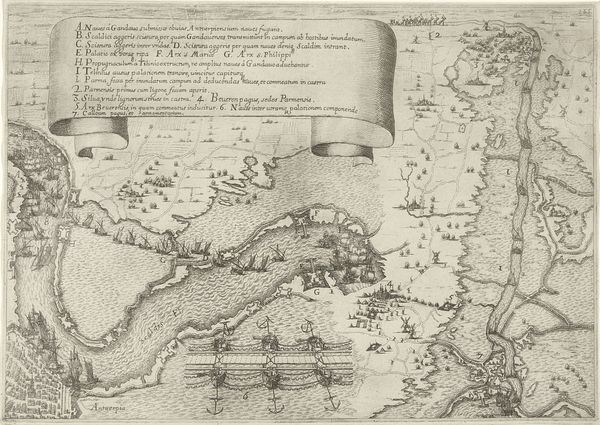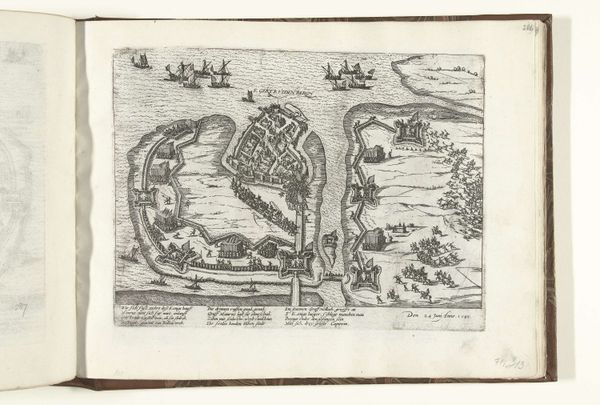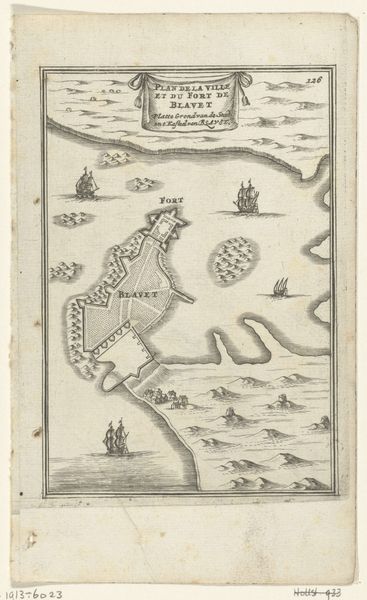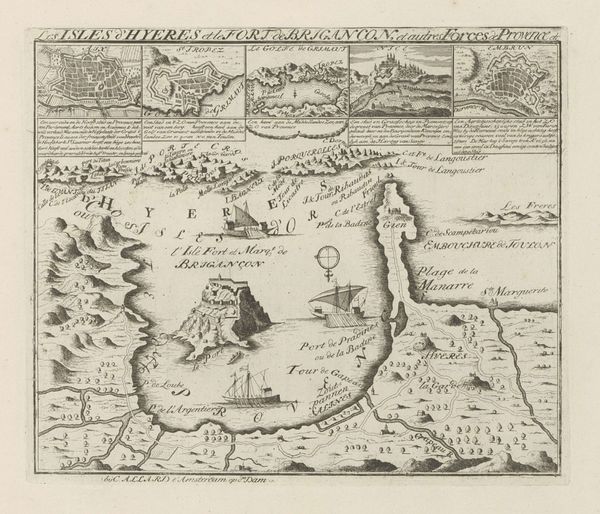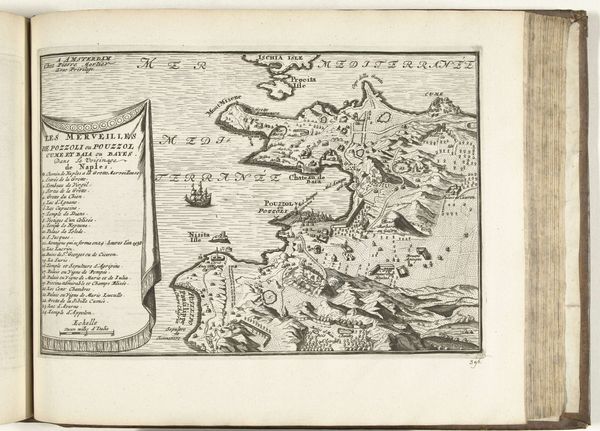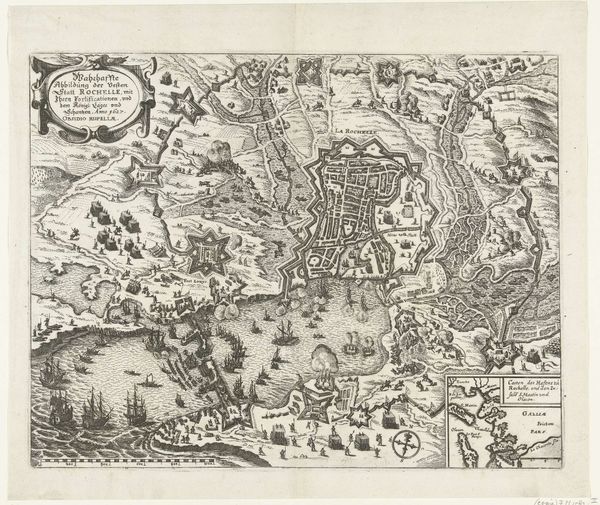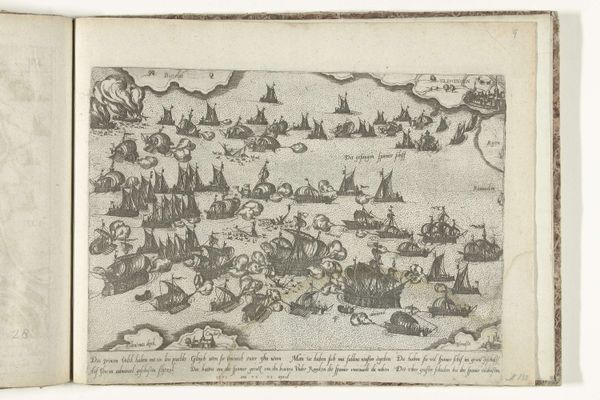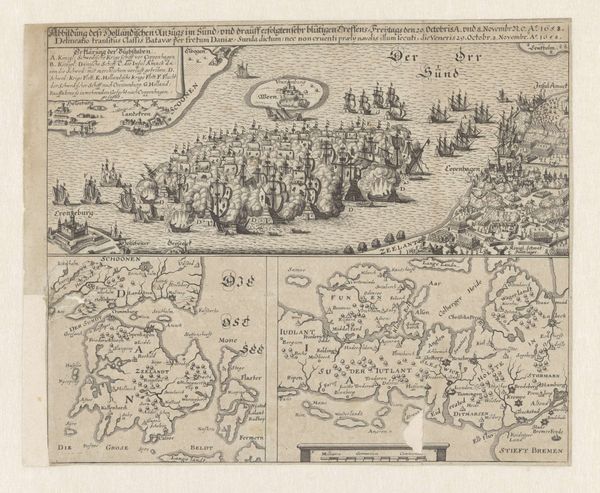
print, engraving
# print
#
old engraving style
#
landscape
#
figuration
#
ancient-mediterranean
#
history-painting
#
engraving
Dimensions: height 240 mm, width 310 mm
Copyright: Rijks Museum: Open Domain
Editor: Here we have an engraving titled "Slag op de Diemerdijk, 1573," or "Battle on the Diem Dyke, 1573." It's anonymous, dating from around 1573-1575. It looks almost like a map, filled with tiny figures engaged in battle, set against a landscape. It feels very removed, a bird's eye view of conflict. What do you see in this piece, particularly about its relationship to the events it depicts? Curator: It's fascinating, isn't it? While seemingly objective, even cartographic, this engraving is deeply embedded in the politics of its time. It depicts a key moment in the Dutch Revolt, a struggle against Spanish rule fueled by religious and economic oppression. Consider how the artist chooses to portray the landscape itself – is it a neutral backdrop, or does it play a role in framing the Dutch struggle for independence? Editor: That's a great point! I hadn’t really considered the landscape itself as being a participant in the story. Curator: Think about the use of perspective, too. That elevated viewpoint doesn't just offer information; it asserts a certain kind of authority. Whose perspective is privileged here, and what does that tell us about the intended audience and the overall message? Were they meant to feel triumphant, warned, or something else entirely? Editor: It’s interesting how much this engraving asks of the viewer, how much background knowledge is required to even begin to unpack it. It's much more than just a historical record. Curator: Precisely! It is an assertion of cultural identity and a commentary on power. Studying it, we confront questions of nationalism, representation, and the ongoing struggle for liberation that still echoes today. Editor: Wow, I never expected a simple engraving to hold so many layers. I definitely see it differently now. Curator: These works help us consider art as an active agent in shaping history. It helps to reflect on the power dynamics at play not only during the conflict itself, but also in the very creation and viewing of this image.
Comments
No comments
Be the first to comment and join the conversation on the ultimate creative platform.
